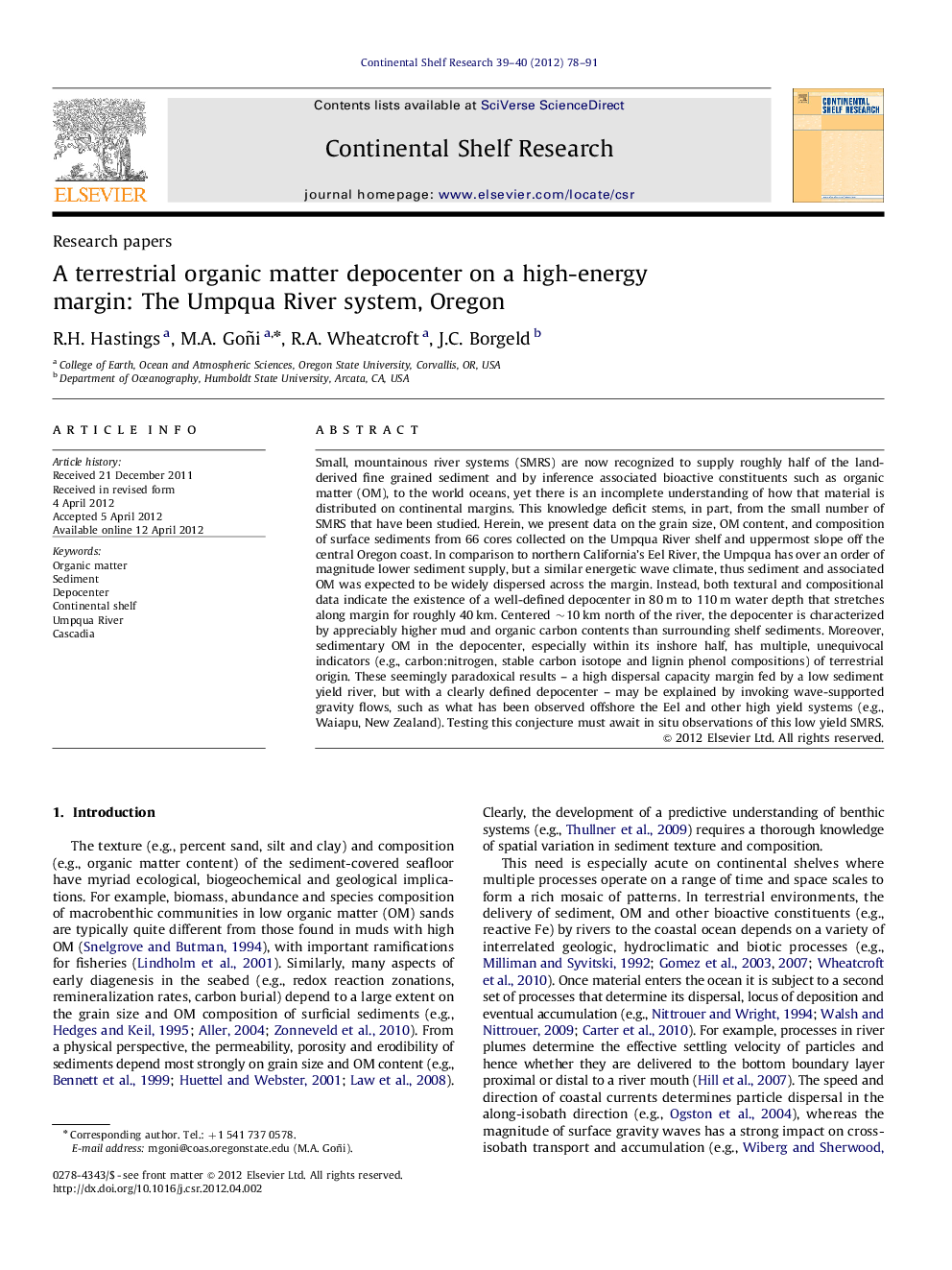| Article ID | Journal | Published Year | Pages | File Type |
|---|---|---|---|---|
| 4532398 | Continental Shelf Research | 2012 | 14 Pages |
Small, mountainous river systems (SMRS) are now recognized to supply roughly half of the land-derived fine grained sediment and by inference associated bioactive constituents such as organic matter (OM), to the world oceans, yet there is an incomplete understanding of how that material is distributed on continental margins. This knowledge deficit stems, in part, from the small number of SMRS that have been studied. Herein, we present data on the grain size, OM content, and composition of surface sediments from 66 cores collected on the Umpqua River shelf and uppermost slope off the central Oregon coast. In comparison to northern California's Eel River, the Umpqua has over an order of magnitude lower sediment supply, but a similar energetic wave climate, thus sediment and associated OM was expected to be widely dispersed across the margin. Instead, both textural and compositional data indicate the existence of a well-defined depocenter in 80 m to 110 m water depth that stretches along margin for roughly 40 km. Centered ∼10 km north of the river, the depocenter is characterized by appreciably higher mud and organic carbon contents than surrounding shelf sediments. Moreover, sedimentary OM in the depocenter, especially within its inshore half, has multiple, unequivocal indicators (e.g., carbon:nitrogen, stable carbon isotope and lignin phenol compositions) of terrestrial origin. These seemingly paradoxical results – a high dispersal capacity margin fed by a low sediment yield river, but with a clearly defined depocenter – may be explained by invoking wave-supported gravity flows, such as what has been observed offshore the Eel and other high yield systems (e.g., Waiapu, New Zealand). Testing this conjecture must await in situ observations of this low yield SMRS.
► Identified a depocenter on the energetic Oregon continental shelf. ► Depocenter is characterized by muddy sediment with high organic carbon contents. ► Multiple indicators indicate this depocenter is formed by the Umpqua River. ► Comparison with the Eel R. depocenter show important similarities and differences.
